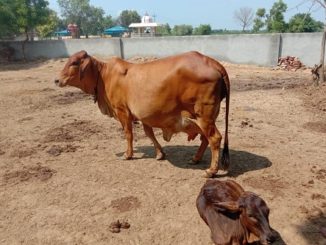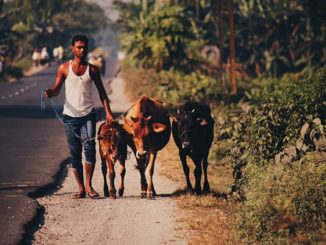Introduction
Milk fever is a common metabolic or production disease found in high producing dairy cows. It generally occurs within 24 hours postpartum but can occur up to 2-3 days post calving. It can occur either clinically, when the blood calcium level falls below 1.4mM which includes both downer and non-downer cows, or sub-clinically when blood calcium level is less than 2mM but more than 1.4mM. As with other metabolic diseases, milk fever is associated with significant economic burden incurred due to production losses, treatment cost and culling of animals. The occurrence of milk fever predisposes other metabolic diseases and infections, such as ketosis and metritis, and approximately 5 percent of downer cows do not recover. Traditionally, milk fever has been associated with higher risk of dystocia, uterine prolapse, retained placenta, mastitis and displaced abomasum. Decreased milk production, decreased immune function, increased risk of ketosis, decreased reproductive performance, and increased risk of early removal from the herd are the negative consequences of subclinical hypocalcemia.
Etiopathogenesis of Milk fever
Calcium plays a key role in muscle function and maintenance of immune system. When blood calcium levels decrease below a certain level, the nerve cell function and muscle contractions get affected, which in turn manifests overtly as what is called the “Milk Fever”. Cows get calcium from dietary source and there exists a loop between bone and blood calcium pool, that is under strict hormonal regulation. The calcium level is also dependent on the dietary absorption from small intestine that is dependent on other minerals (e.g., phosphorus and magnesium) and vitamins (e.g., vitamin D). Under normal conditions, the calcium feedback loop and dietary inclusion keeps calcium level to an optimum. With the onset of lactation, and production of colostrum, the cow’s requirement for calcium increases substantially (400 percent increase in a day). To meet these calcium requirements, the cow must increase both the absorption and resorption processes. Any factors that interfere with these processes mean the cow cannot meet the increased demand for calcium, and this results in lowered blood calcium concentration and milk fever.
The periparturient or transitional period is a very stressful time for animals, when the body undergoes significant changes in physiology, the dry matter intake also drops. All these predisposes animals to metabolic diseases like milk fever.

Clinical signs
- The characteristic signs of milk fever include a lack of muscle function, beginning with stiff walking. Some cows end up throwing their legs to the side in an attempt to retain their balance. In time, most cows suffering from milk fever will end up becoming downer cows, who sit quietly and are unable to rise. Their coat feels cold and the temperature will be lower than normal.
- The cow’s rectum will commonly be full of faeces, and generally the anus will bulge.
- Some cows end up developing a fine muscle tremor, and so they can be seen to shiver, particularly over their neck and chest. If left untreated, the muscle paralysis will end up getting worse.
- Eventually lateral recumbency develops and cows are not able to sit back up again. Due to being in this position, the cow will become bloated, which without proper treatment ends up dead.
Treatment
A cow that is suspected to be suffering from milk fever needs to be supported and treated properly. Cases of milk fever are treated with intravenous application of 500 milliliters of 23 percent calcium gluconate, followed by the administration of two oral calcium bolus given 12 hours apart. However, oral calcium bolus should not be administered if cows do not respond to the calcium IV treatment. In milk fever cows, failing to rise after treatment with IV calcium is a signal that normal muscular function has not been re-established. Cows may choke on the calcium bolus if treatment is given while they are still down.
Intravenous calcium should not be administered to cows not showing overt signs of milk fever, in subclinical cases as giving intravenous calcium to dairy cows with subclinical hypocalcemia can result in a long term decrease in blood calcium concentration.
Prevention of Milk Fever
Adopting good management practices along with preventive measures is always highly recommended. Indeed, all cases of milk fever can be prevented.
Management interventions: breeding cows or sires which have a history of recurrent milk fever should not be bred. Animals should not be allowed to get too fat, regular exercise should be provided so that an optimal body condition is maintained. Cows with marked body condition loss are at a much higher risk of suffering from milk fever, according to studies. Thus, cows need to be given sufficient and proper exercise.
Dietary management: If we want to avoid metabolic disease, one of the key factors is the cow’s diet. Besides ensuring that the diet allows the cows to have a proper body condition, suitable amounts of magnesium need to be provided. This is even more important during the late pregnancy stages. Magnesium plays a vital role in the prevention of milk fever. It is essential for the efficient absorption and resorption of calcium. Supplementation with magnesium has the largest effect on decreasing the incidence of milk fever.
Supplementing with magnesium for two to three weeks pre-calving will reduce the risk of milk fever. However, it does not build up a store of magnesium, and continued supplementation will be required during early lactation.
The calcium intake during the dry period should be maintained below 50g per day, and whenever possible below 20g. This will help to improve the efficiency of calcium absorption and its mobilisation. Then, just before the calving period, this should be increased. It is also recommended to avoid giving cows feeds that are high in phosphorus.
Some studies also concluded that with diets that are high in sodium and potassium, there could be a higher incidence of cows suffering from milk fever. It is thus advisable to limit dietary potassium, particularly during the dry and the post-calving period.
Conclusion
Milk fever is one of the commonly found metabolic diseases in high producing animal, that results in significant losses. Proper management and knowledge however can help prevent almost all cases of milk fever.
References
- Caixeta L. (2019). Prevention and treatment of milk fever. Retrieved from: https://extension.umn.edu/dairy-milking-cows/hypocalcemia
- Lyons N. (2022). Milk Fever in Cows – Causes, Symptoms & Treatment. Retrieved from: https://www.moocall.com/milk-fever-in-cows/






Be the first to comment